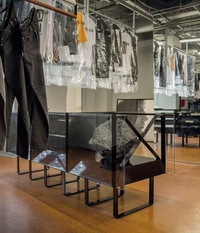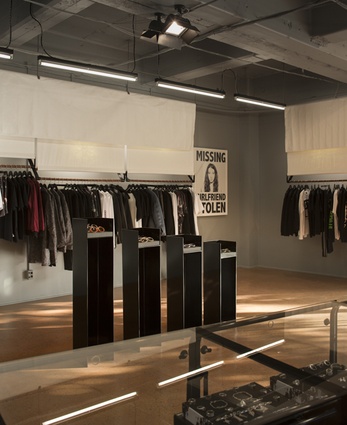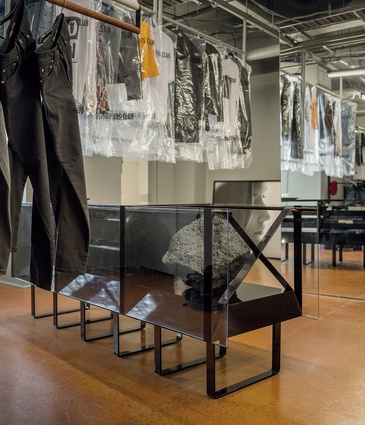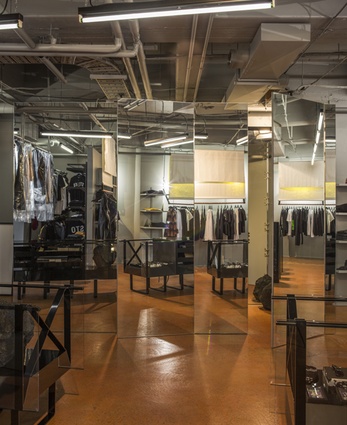Stolen Girlfriends Club
The Fearon Hay-designed flagship store for New Zealand fashion label Stolen Girlfriends Club (SGC) has opened recently in Auckland’s Newmarket shopping district.

Taking its cues from the label’s rock-and-roll aesthetic, Fearon Hay Architects created an interior with an industrial undertone and anchored by a materiality of gloss black steel combined with reddish, poured resin floors (by surface designer Eric Knoben) and transparency.
Influenced by SGC’s dry-cleaner-like clothes wrapping, the owner’s penchant for resin sculptures of shark fins and a large window at the back end of the space, the architects peppered the retail store with allusions to transparency and translucency. The most notable of these is the racking system where a cream, canvas-like textile has been hung from ceilings and used to suspend rosewood hanging racks.
According to architectural graduate Piers Kay from Fearon Hay Architects,“we knew what we wanted out of the fabric – that it could support the garments, but also provide that level of transparency and layering.” Lights were installed strategically behind the fabric to create a crumpled-paper quality.
The store’s centrepieces are black steel plinths in varying heights, and an arresting series of steel display units (manufactured by Robinson Interiors), which add horizontality and direction to the space.














